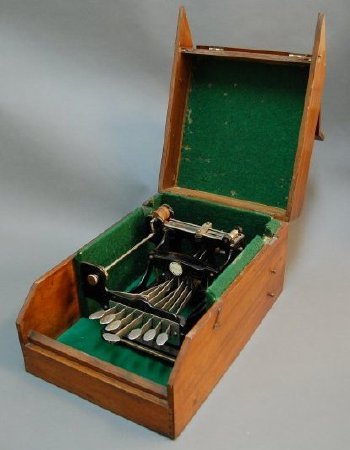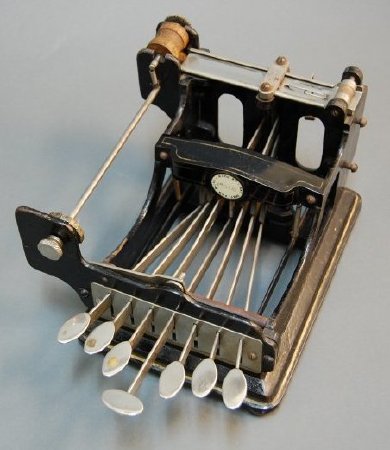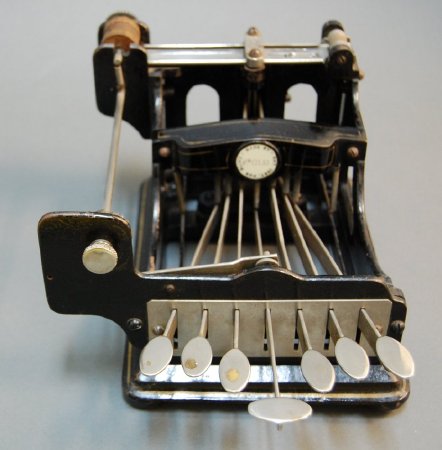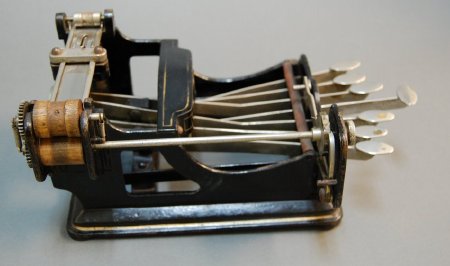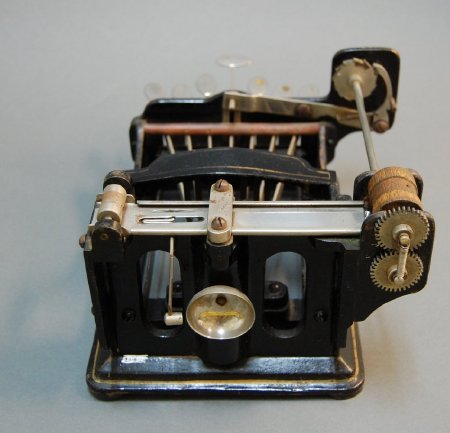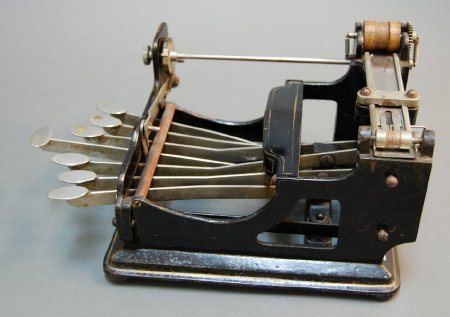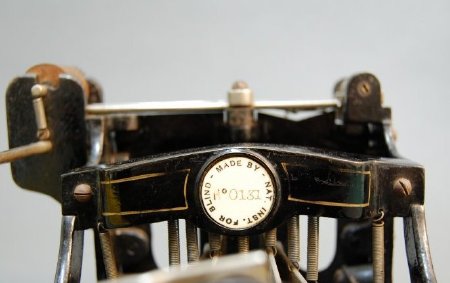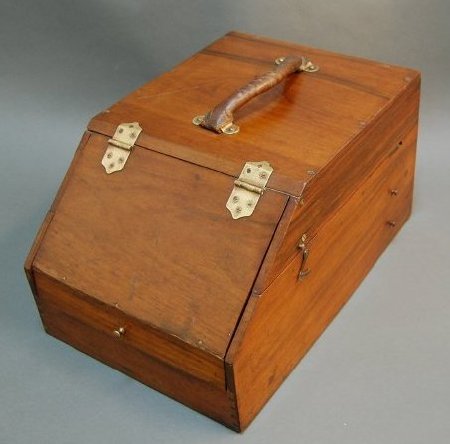Object ID:
2018.12
Title:
Stainsby-Wayne Braille Shorthand Writer
Creator:
National Institute for the Blind
Description:
(a) braillewriter: open steel frame, black enamel with a gold pinstripe around the base and on a bar atop the keyboard springs; white celluloid disk is stamped, "MADE BY NAT. INST. FOR BLIND No. 0131"; four rubber pads at corners of base; seven long nickel-plated brass keys, slightly splayed in front, with the middle space bar extending out beyond the braille keys, oval keypads with the space key arranged at 90 degrees to the braille keys; a rectangular nickel-plated keyboard shield with seven vertical slots is screwed to front of frame; rubber covered bars above and below the key bars help muffle the machine; two screws on right side of frame to support a removable arm holding the paper roll (this arm and the roll are missing on this example); paper tape from the roll would be threaded under a small roller on the right, into a nickel-plated brass track with rolled edges, and between two wooden rollers on the left; the top wooden roller is secured by a pair of springs, allowing it to be lifted into a second bearing position; the rollers are geared to advance the paper tape automatically as the braille keys are pressed; a gnurled roller above and to the left of the keyboard can also advance the tape manually once the space bar is depressed; the braille diebox is clamped in the middle of the paper track on the back of the machine; an end-of-paper bell is mounted on the back of the frame; (b) case: wooden carrying case with angled front; two part hinged lid; angled front of lid has a compartment door opened with a brass knob, allowing access to the keyboard while the main lid is closed, slots in the sides of the case allow paper tape to end and exit, and two screws on the right allow the paper roller bar to be mounted externally (this configuration would allow quieter operation); the main lid is also hinged on the back, allowing the entire lid to be opened to remove the writer, and secured on sides with two swivel hooks; leather handle on two brackets screwed to top of lid; inside of case is lined with green wool felt, both to cushion writer during transportation, and to deaden sound during use with the case closed; sides of case joined with small dovetail joints, top secured with brass screws, bottom secured with small brads.
Dimensions:
H-10 W-11.25 D-16 inches
Date:
ca. 1920
Made by:
Wayne, Alfred and Henry Stainsby; National Institute for the Blind
Place of Origin:
Birmingham, England
Provenance:
Henry Stainsby (1859-1925), Supt. of the Birmingham Royal Institution for the Blind, (later General Secretary of the British & Foreign Blind Association) along with Birmingham manufacturer Albert Wayne, had patented a braille shorthand machine in 1899-1900. His tapewriter was developed as a note-taking tool to facilitate the training of blind stenographers at Birmingham. Stainsby's goal was employment for his students. By 1901, the Birmingham school was teaching braille shorthand to its students and a photograph of the writer appeared on page 7 of its 1900-1901 annual report. Machines had been imported to the U.S. as early as 1902 as reported in the January 1903 Typewriter and Phonographic World magazine. By 1913, advertisements for this machine appeared in a revised Braille Shorthand published by the British and Foreign Blind Association, selling for 5 lbs, 5 shillings without a case. When the BFBA became the National Institute for the Blind in 1914, its catalog continued carrying the shorthand writer. It was replaced by the Stainsby "C" in 1928, and it is likely this example is considered a model "B".
Credit Line:
Museum Purchase, 2018.12.
